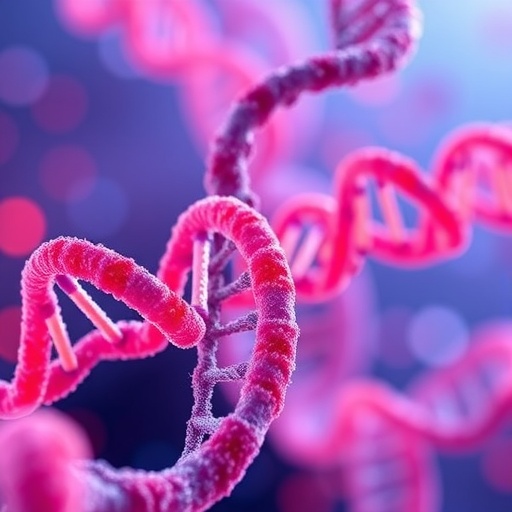In the realm of molecular biology, deoxynucleoside triphosphates (dNTPs)—specifically dATP, dTTP, dGTP, and dCTP—constitute the very building blocks of DNA, the fundamental blueprint delineating life’s complex processes. Cellular proliferation hinges critically on the availability of these dNTPs, as DNA replication demands a continuous and balanced supply of these molecules to accurately duplicate the genome. When this supply wanes, a cascade of repercussions ensues, where halted DNA synthesis effectively arrests cell division and proliferation, impeding essential physiological processes.
Given these stakes, researchers have long employed the strategy of supplementing cell culture media with nucleosides—namely adenine (A), thymidine (T), guanine (G), and cytosine (C)—which serve as biochemical precursors to the corresponding dNTPs within the cellular milieu. This intervention has been widely embraced as a means to sustain and expedite DNA replication by ostensibly amplifying the intracellular concentration of dNTPs. For decades, the prevailing dogma assumed that this method simply augmented the overall dNTP pool, thereby revving up replication machinery. Yet, the meticulous mechanisms underpinning this phenomenon remained shrouded in ambiguity, eluding clear scientific elucidation.
A breakthrough study led by Andrei Chabes of Umeå University in Sweden, in partnership with collaborators Tomomi Tsubouchi from Japan’s National Institute for Basic Biology and Shizuoka University, as well as Erik Johansson at Umeå University, shifts the paradigm with incisive revelation. Their findings, recently published in Nucleic Acids Research, challenge prior assumptions by demonstrating that nucleoside supplementation’s efficacy is not due to a mere generalized increase in all dNTPs. Instead, the pivotal agent of effect is a refined biochemical balancing act that centers specifically on thymidine and its phosphorylated derivative, dTTP.
This nuanced discovery hinges on the interplay between dTTP and dUTP, the latter being a structurally similar but erroneous nucleotide triphosphate—deoxyuridine triphosphate—that can act as a potent inhibitor of DNA replication when aberrantly incorporated or present at elevated levels. The research team uncovered that supplementing thymidine selectively elevates intracellular dTTP, which competitively mitigates the inhibitory effects of dUTP on the DNA polymerase enzyme, the molecular architect responsible for synthesizing new DNA strands. This delicate balance ensures the fidelity and efficiency of DNA polymerization proceed unimpeded.
As Dr. Kiminori Kurashima, one of the study’s principal authors, elucidates, their routine utilization of nucleoside supplementation as an acceleration tool in DNA replication was met with uncertainty regarding its molecular intricacies. The newly quantified insights from this study afford a crucial window into the precise biochemical dynamics that reshape this understanding, conclusively discrediting the outdated notion that uniform dNTP elevation was the central driver of accelerated replication.
Furthering the depth of their inquiry, the researchers engineered cellular environments with artificially augmented dUTP levels, observing a marked deceleration in DNA replication—corroborating the hypothesis that dUTP’s presence is antagonistic. Remarkably, the introduction of thymidine reversed these inhibitory effects, rescuing the replication speed and underscoring the physiological relevance of thymidine’s modulatory role. This effect was convincingly mirrored in refined in vitro systems, further affirming that dUTP’s inhibitory influence stems from direct interference with the DNA polymerase’s catalytic action.
The technical challenge of measuring intracellular dNTP concentrations with precision—a task fraught with complexity due to nucleotide instability and low abundance—has historically impeded such mechanistic insights. The collaboration harnessed cutting-edge quantitative assays developed by Praveen Pandey in the Chabes laboratory alongside the Johansson lab’s sophisticated reconstitution of mammalian DNA synthesis outside living cells. These methodological advances have unveiled a molecular framework whereby nucleoside supplementation disproportionately affects thymidine pools, which in turn safeguards replication integrity by constraining dUTP’s disruptive potential.
This revelation invites a redefinition of long-held views within the field of DNA replication dynamics. Whereas prior paradigms considered nucleoside addition as a blunt instrument to bolster overall nucleotide availability, the current evidence paints a subtler, more targeted picture: elevated dTTP acts as a sentinel that maintains the precision and velocity of DNA synthesis by preventing molecular sabotage from erroneous dUTP incorporation or interference.
Consequently, this refined understanding has broad ramifications, spanning from fundamental biology to practical applications in biotechnology and medicine. For instance, it provokes reconsideration of how nucleoside supplementation protocols are optimized in cell culture and tissue engineering. It may also inform cancer research, where dysregulated dNTP pools and heightened dUTP levels are implicated in genomic instability—a hallmark of malignancy.
Moreover, the study opens avenues for pharmacological intervention aimed at precisely tuning nucleotide pools. By manipulating dTTP levels, it might be possible to modulate replication fork speed and fidelity, potentially augmenting therapeutic strategies that exploit replication stress in tumor cells or ameliorate conditions arising from defective DNA synthesis.
In sum, the meticulous dissection of nucleoside supplementation’s impact affirms that not all dNTPs are created equal in their functional influence on DNA replication. Thymidine holds a unique and indispensable position as a molecular gatekeeper, deftly counterbalancing inhibitory challenges presented by dUTP and sustaining the complex choreography of cellular replication with heightened accuracy and pace.
This landmark study thus catalyzes a paradigm shift, underscoring the nuance inherent in the seemingly straightforward act of adding molecules to fuel life’s fundamental process. It exemplifies the profound insights that emerge when precision biochemical analytics converge with molecular enzymology, charting new paths in understanding and manipulating the cell’s most vital machinery.
Subject of Research: Molecular mechanisms of nucleoside supplementation in DNA replication, focusing on thymidine’s role in balancing nucleotide pools to mitigate dUTP-mediated inhibition.
Article Title: Decoding nucleoside supplementation: how thymidine outperforms ribonucleosides in accelerating mammalian replication forks
News Publication Date: 14-Oct-2025
Web References:
10.1093/nar/gkaf1035
Keywords: Molecular biology, DNA replication, dNTP balance, thymidine, dUTP inhibition, nucleoside supplementation, DNA polymerase, replication fork, cellular proliferation
Tags: adenine thymidine guanine cytosine rolesbiochemical precursors in cell cultureChabes Tsubouchi collaborationdeoxynucleoside triphosphatesDNA replication accelerationdNTPs and cellular proliferationenhancing intracellular dNTP concentrationimplications of halted DNA synthesismechanisms of DNA synthesismolecular biology breakthroughsnucleoside supplementationUmeå University research study





